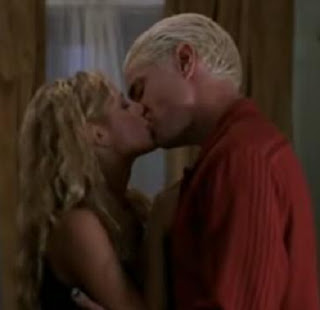Copyright 2011 by Gary L. Pullman
According to the flyleaf to Richard Bachman’s* novel Blaze (2007), the protagonist is “one of the most sympathetic criminals in all . . . literature.” This estimation may be equal parts hyperbole and objective assessment, but few would argue, it seems, that Blaze is, in fact, a compelling character. What makes him so? The novel is a study in characterization. Much of the effect is achieved by Bachman’s demonstration of Blaze’s perceptions of other characters and of situations. Mildly retarded and altogether psychotic (he hears voices that no one else hears), Blaze frequently accepts everyone and everything at face value, seldom analyzing, evaluating, or passing judgment on anyone or anything. His matter-of-factness, which is surely as much an effect of his retardation as it is of his pureness of heart, nevertheless creates an image of him as being, despite his criminality, one who is--or seems to be--unaffected, if not always altogether guileless. Nevertheless, he is a criminal. As such, Blaze is, on one hand, a sympathetic soul, while, on the other hand, despite his pathetic thoughts, hopes, fears, and dreams, he is also revolting. To have created such a character is an accomplishment suggestive more of a Stephen King than of a Richard Bachman.
The first chapter opens with “George was somewhere in the dark. Blaze couldn’t see him, but the voice came in loud and clear, rough and a little hoarse. George always sounded as if he had a cold. He’d had an accident when he was a kid. He never said what, but there was a dilly of a scar on his adam’s apple.” Although George is unseen, we are led to believe that he exists as more than a voice: “George was somewhere in the dark,” we are told. Moreover, the use of such adjectives as “loud” and “clear,” “rough” and “hoarse,” to modify the sound of George’s voice helps to establish the thought that the character is as real as the young man, Blaze, who hears him speaking. Finally, the reference to George’s past accident provides a speck of back story that helps to present George as a real person, like Blaze.
George also reacts to Blaze’s actions. When Blaze seeks the wrong automobile--to steal, as it turns out--George corrects him: “Not that one, dummy, its got bumper stickers all over it. Get a Chevy or a Ford. Dark blue or green. Two years old, No ore, no less. Nobody remembers them. And no stickers.” Again, the details also help to sustain the notion that George is more than merely a memory and that his voice is more than simply a hallucination. The voice advises George about specific details concerning the automobile: it should not have bumper stickers on it, it should be either “a Chevy or a Ford,” it should be no older than two years, .and it should be “dark blue or green.” George even calls Blaze a name, “dummy,” which is, although insulting, characteristic of Blaze’s condition and not one that he is likely to have applied to himself, for retarded people seldom know of their own accord, without being told so by others, that they are retarded. These techniques make George seem as real a character as Blaze. As George continues to direct, counsel, and insult Blaze, the illusion that he is real continues: “That’s your left. . . . Your right, dummy. The hand you pick your nose with.” George keeps Blaze on track when Glaze’s thought begin to stray and even tells Blaze how to hotwire the car.
It comes as something of a shock, then, when the cat is let out of the bag, and we learn that “George is dead.”
Blaze remembers, for a time, that his former partner in crime is deceased, but, “the next morning,” George is back--in Blaze’s head, at least--reminding Blaze to tuck in both of his shirttails and telling him to wipe out the tire tracks in the snow outside the shed in which Blaze has hidden the stolen car. One minute, Blaze remembers that George is dead (“George had been dead since that crap game in the warehouse”), but the next minute he seems to forget, thinking that George is alive (“George was inside drinking coffee by the stove”). By his alternating between these conflicting ideas, Blaze indicates his own confusion, indicating to us his madness, and this strange disoriented state of mind is compelling: we are intrigued at what it is like to perceive as Blaze perceives, to think as Blaze thinks, and to experience the world as Blaze experiences it, partly real and partly illusory at the same time or in quick, alternating sequences. Although Blaze has committed a crime, stealing the automobile--and, we suspect, will almost certainly commit far worse ones, if he has not already done so, before we met him, as it were--we are both repelled by his behavior and sympathetic toward his plight. In short, Blaze is a fascinating character.
Bachman presents his world as it seems to be to Blaze, and, in doing so, allows us, from the safety of our homes, sane and sound of mind ourselves, to see--or, at least imagine--what it would be like to be out of our minds. Who could resist such a character as Blaze? Bachman is counting on our not being able to do so. (The movie Ed Gein [2000], starring Steve Railsback, offers a good motion picture example of the same technique.)
*Yes, I know that Stephen King is Richard Bachman (unless Bachman is King). The question is whether King (or Bachman) knows this. Maybe King’s own schizophrenia, in supposing himself to be two people (even if he knew and knows he really is only one) helped him to create the psychotic and somewhat schizophrenic Clayton (“Blaze”) Blaisdell, Jr. Ever think of that?

























